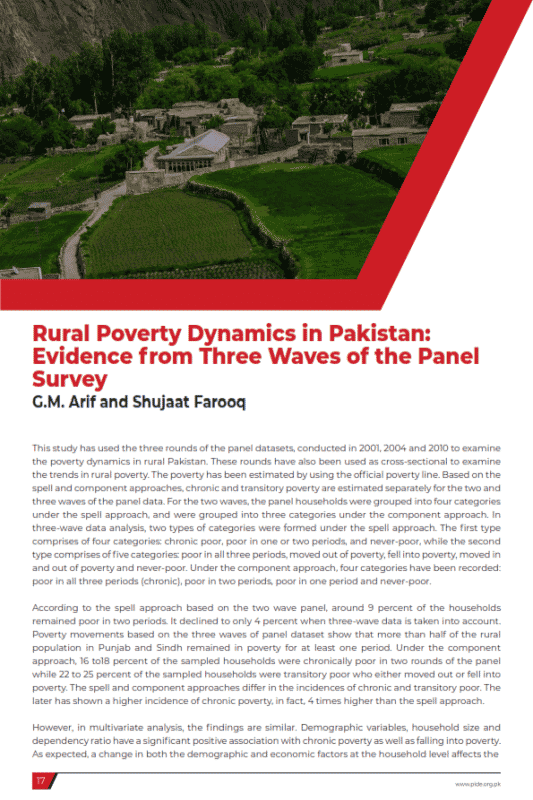
Pakistan Institute of Development Economics
- Home
Our Portals
MenuMenuMenuMenuMenuMenuMenu - ResearchMenuMenuMenuMenuMenuMenuMenu
- Discourse
- The PDR
- Our Researchers
- Academics
- Degree Verification
- Thesis Portal
- Our Portals
Rural Poverty Dynamics in Pakistan: Evidence from Three Waves of the Panel Survey (P & R Vol.2 Issue 4)
This study has used the three rounds of the panel datasets, conducted in 2001, 2004 and 2010 to examine the poverty dynamics in rural Pakistan. These rounds have also been used as cross-sectional to examine the trends in rural poverty. The poverty has been estimated by using the official poverty line. Based on the spell and component approaches, chronic and transitory poverty are estimated separately for the two and three waves of the panel data. For the two waves, the panel households were grouped into four categories under the spell approach, and were grouped into three categories under the component approach. In three-wave data analysis, two types of categories were formed under the spell approach. The first type comprises of four categories: chronic poor, poor in one or two periods, and never-poor, while the second type comprises of five categories: poor in all three periods, moved out of poverty, fell into poverty, moved in and out of poverty and never-poor. Under the component approach, four categories have been recorded: poor in all three periods (chronic), poor in two periods, poor in one period and never-poor.



